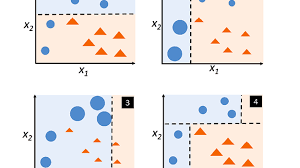Let me be blunt: the Flawed Lens, this corporate relic so readily embraced, is an illusion. It promises clarity but delivers distortion. Managers pick it up with the enthusiasm of a child discovering a magnifying glass, convinced it will help them see more clearly. Instead, they torch the nuances of their teams, reducing complexity into the seductive simplicity of “overconfidence” and “ignorance.” But life, as Nassim Taleb might say, isn’t linear or simplistic. It’s messy, nonlinear, and often counterintuitive.
The Flawed Lens thrives on convenient explanations: it shifts focus to individuals and away from systemic issues. Yet as some organizations cling to it, others are discarding it, seeing the broader picture, and leaving competitors in their wake. Are you ready to leave the Flawed Lens behind? Let’s explore its pitfalls—and how you can move beyond them.
What Is the Flawed Lens?
The Flawed Lens is the tendency to oversimplify workplace challenges, reducing them to individual failings like “overconfidence” or “ignorance.” It obscures deeper, systemic dynamics that often drive these behaviors.
Key characteristics of the Flawed Lens include:
- Oversimplification: Complex problems are reduced to convenient labels.
- Blame Shifting: Responsibility is placed on individuals rather than systems or structures.
- Missed Nuances: Critical elements like workplace culture, team dynamics, and leadership behaviors are ignored.
How the Flawed Lens Distorts Reality
The Flawed Lens thrives in a world addicted to shortcuts. It offers easy explanations that appeal to our need for simplicity:
1. Overconfidence in Decision-Making
An employee makes a bad call? Blame overconfidence. But does anyone ask why confidence, even when misplaced, is rewarded? The Flawed Lens enables leaders to ignore systemic incentives that encourage bravado over expertise.
2. Undervaluing Quiet Talent
Quiet, methodical contributors—those who could be the foundation of innovation—are often overlooked. The Flawed Lens favors louder, more visible personalities while sidelining the quiet brilliance that fuels true progress.
3. Misguided Training Programs
The Flawed Lens says: “Fix overconfidence.” What it means is: “Tinker with symptoms while ignoring the root causes.” Truly effective training requires collaboration, adaptability, and trust—none of which are quick fixes.
A Real-World Example: The Burnout of Alex
Picture Alex: a project manager with moderate experience and immense confidence. Tasked with leading an agile project, Alex makes bold promises, ignores advice, and ultimately delivers delays and missed targets. Leadership quickly declares, “Classic Dunning-Kruger tendency.”
But here’s what the Flawed Lens misses:
- Corporate Culture: Alex was rewarded for decisiveness, regardless of expertise.
- Success Bias: Alex’s confidence came from wins in simpler projects that didn’t translate to complex environments.
- Team Silence: The team, hesitant to challenge Alex, remained quiet due to a lack of psychological safety.
Alex wasn’t the problem—Alex was the symptom of deeper organizational dynamics.
The Hidden Costs of the Flawed Lens
Failing to address systemic challenges results in significant organizational consequences:
1. Misplaced Blame
- Focus shifts to individuals rather than systems.
- Core cultural challenges go unresolved, leaving organizations stagnant.
2. Lost Potential
- Quiet innovators are overlooked and often leave for competitors who recognize their value.
- The organization loses its ability to innovate and adapt.
3. Surface-Level Training
- Programs designed to “fix” overconfidence fail to address collaboration and trust.
- Teams remain uninspired and disengaged.
4. Reinforced Biases
- The Flawed Lens amplifies stereotypes, perpetuating inequality and ignoring diversity in thought and execution.
Why You Can’t Afford to Ignore This
The Flawed Lens is more than an inconvenience; it’s a liability that actively undermines your success. Consider:
- Your competitors are evolving: They’re ditching outdated approaches, embracing systemic fixes, and thriving.
- Your organization can’t innovate: Without addressing systemic problems, growth stalls.
- You’re losing your best talent: Employees who feel unseen or undervalued won’t stick around—they’ll leave for better opportunities.
How much longer can you afford to look through a lens that distorts reality?
A Sharper Tool for a Clearer Vision
Let me suggest this: ignoring the Flawed Lens won’t make it go away. Today, you have a choice. Keep staring through it while your competitors thrive—or discard it and start seeing the full picture.
Here’s what moving beyond the Flawed Lens looks like:
- Uncover Systemic Failures: Identify cultural and structural dynamics driving problematic behaviors.
- Amplify Employee Potential: Recognize and nurture quiet, methodical talent.
- Create a Collaborative Culture: Build an environment where adaptability and trust are the norm.
What’s Your Next Step?
I’ll take a guess: you’ve seen the problems. You’ve sat in meetings where leaders blamed individuals, overlooked talent, and implemented ineffective training. I bet you are a bit like me—you see the flaws, but the alternatives seem overwhelming.
But here’s the thing: the longer you wait, the more costly the consequences. Imagine transforming your organization today. How open-minded are you to exploring this transformation? Yes, it’s hard work, but it’s worth it.
Reach out to us today. Let’s start building a sharper, clearer vision for your organization—before the ones who already have leave you behind(Click Here).








